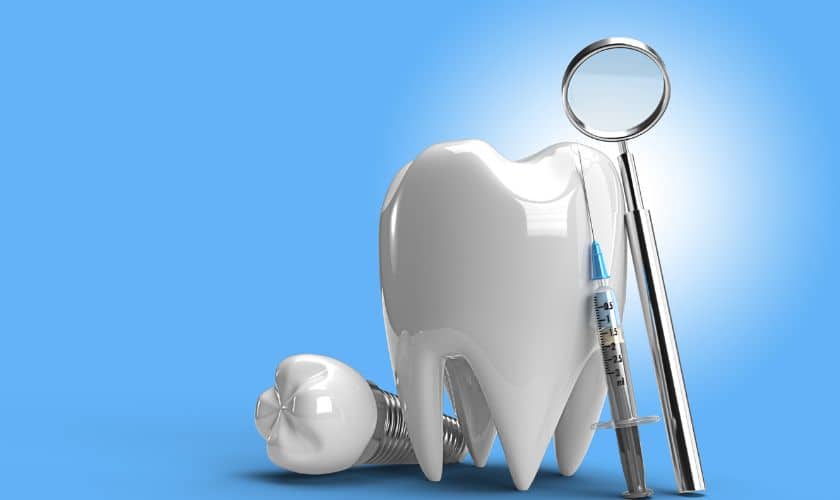
Welcome to our latest blog post on dental health! Our teeth are an essential part of our daily lives, and it’s crucial to take care of them properly. However, despite all the brushing and flossing, sometimes tooth decay happens. When this occurs, you need dental restoration work done – also known as fillings. But how do you know when it’s time for a filling? In this article, we’ll explore the signs that indicate you need dental restoration work done and what to expect from the procedure itself. So sit back, relax, and let’s dive into everything you need to know about tooth fillings!
Why Are Teeth Losing Their Color And Structure?
Our teeth are naturally strong and durable, but various factors can cause them to lose their color and structure over time. One of the main reasons why teeth can become discolored is due to poor dental hygiene habits. This includes inadequate brushing or flossing, which can lead to a buildup of plaque and tartar on the teeth.
Another common reason for tooth discoloration is consuming certain foods and drinks that contain staining agents such as coffee, red wine, soda, and berries. Smoking tobacco products can also significantly contribute to yellowing teeth.
In addition to discoloration, our teeth may lose their structure due to decay or injury. When harmful bacteria accumulate on the surface of your tooth enamel over time without being treated with proper dental care such as cleanings or fillings, it will start eroding at your enamel leading you towards cavities which eventually leads you into getting a filling done by a dentist.
Additionally, trauma from accidents or sports injuries could also result in chipped or broken teeth requiring restorative procedures like crown placements.
It’s essential always to take good care of our oral health by practicing daily brushing habits twice a day along with regular visits and checkups with professional dentists every six months who help us restore any issues we might have encountered regarding our oral health timely before they get worse over time damaging both the appearance & strength of our precious asset – Our Teeth!
Early Indications Of Dental Restoration Need
It can be difficult to know when you need dental restoration work done. However, there are some early indications to keep an eye out for that may suggest the need for a tooth filling or other restorative procedure.
One of the most common signs is tooth sensitivity. If you experience pain or discomfort when eating hot, cold, sweet, or acidic foods and beverages, it could mean that your teeth have decayed and require treatment.
Another indication is visible damage such as chips or cracks in your teeth. This type of damage not only affects the appearance of your smile but can also lead to further complications if left untreated.
If you notice dark spots on your teeth or areas where the enamel appears worn down, this could be another sign that restoration work is needed. These spots and worn areas may indicate cavities that require filling before they develop into more serious issues.
If you experience frequent bad breath despite maintaining good oral hygiene habits such as brushing and flossing regularly then it could be a sign of tooth decay requiring a fillings procedure from your dentist.
If any of these symptoms sound familiar to you, it’s important to schedule an appointment with your dentist right away. Early detection and prompt treatment will help prevent further complications and ensure optimal oral health in the long run.
How A Tooth Restoration Procedure Is Performed
Tooth restoration procedures are common dental treatments used to repair and restore damaged teeth. These procedures can include dental fillings, crowns, root canals, or bridges.
Before the procedure, your dentist will examine your tooth to determine the extent of damage. If you need a filling, for example, they will first remove any decayed or damaged material from the tooth. Once cleaned out and prepared for restoration work, your dentist will then place the filling material into the cavity where it bonds with the remaining healthy tooth structure.
For more extensive restorations like crowns or bridges, an impression of your teeth may be taken so that a custom-made prosthetic appliance is created in a dental laboratory. This appliance is then placed overtop of the existing tooth structure to cover and protect it.
Root canal therapy involves removing infected tissue inside a tooth and replacing it with sterile materials before sealing off the opening at its tip with composite resin adhesive.
These procedures aim to improve both oral health and function by restoring compromised teeth to their original form while also preventing future harm.
What To Expect After Having Dental Restoration Work Done
Once you’ve had dental restoration work done, it’s important to know what to expect in terms of recovery and aftercare. The good news is that most people experience minimal discomfort or side effects after the procedure.
Immediately following your dental restoration, you may experience some sensitivity or soreness as the anesthesia wears off. This should subside within a day or two and can usually be managed with over-the-counter pain medication if necessary.
It’s also important to avoid eating hard or crunchy foods for the first few days after your procedure, as well as hot or cold drinks which may exacerbate any sensitivity. Stick to soft foods like yogurt, soup, and mashed potatoes until you feel comfortable enough to resume your normal diet.
Your dentist will likely schedule a follow-up appointment within a week or so of your procedure to ensure everything is healing properly and there are no complications. If you experience any unusual pain, swelling, bleeding, or other symptoms during this period it’s important to contact your dentist right away.
With proper care and attention post-procedure, you’ll be back to enjoying all of your favorite foods in no time!
Bottom Line
As we wrap up this discussion on tooth fillings and dental restoration, it’s important to understand that prevention is always the best course of action. Regular visits to your dentist can help catch issues early before they become major problems requiring more extensive work.
If you do experience any of the early indications for dental restoration that we discussed earlier, don’t hesitate to schedule an appointment with your dentist. The longer you wait, the worse the problem can become.
Remember that there are different types of tooth restorations available depending on the severity and type of damage. Your dentist can recommend which option is best suited for your specific situation.
After undergoing a tooth filling or other restoration procedure, make sure to follow all post-treatment instructions provided by your dentist and maintain good oral hygiene habits at home. With proper care and attention, your restored teeth can last for many years!
